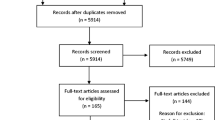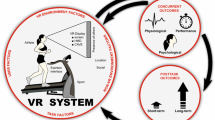Abstract
Virtual reality simulation in surgical training has become more widely used and intensely investigated in an effort to develop safer, more efficient, measurable training processes. The development of virtual reality simulation of surgical procedures has begun, but well-described technical obstacles must be overcome to permit varied training in a clinically realistic computer-generated environment. These challenges include development of realistic surgical interfaces and physical objects within the computer-generated environment, modeling of realistic interactions between objects, rendering of the surgical field, and development of signal processing for complex events associated with surgery. Of these, the realistic modeling of tissue objects that are fully responsive to surgical manipulations is the most challenging. Threats to early success include relatively limited resources for development and procurement, as well as smaller potential for return on investment than in other simulation industries that face similar problems. Despite these difficulties, steady progress continues to be made in these areas. If executed properly, virtual reality offers inherent advantages over other training systems in creating a realistic surgical environment and facilitating measurement of surgeon performance. Once developed, complex new virtual reality training devices must be validated for their usefulness in formative training and assessment of skill to be established.
Similar content being viewed by others
References
Bro-Nielsen M (1998) Finite-element modeling in surgery simulation. Proc IEEE 86: 490–503
Cotin S, Delingette H, Ayache N (1999) Real-time elastic deformations of soft tissues for surgery simulation. IEEE Trans Visualization Computer Graphics, 5: 62–73
Grantcharov TP, Kristiansen VB, Bendix J, Bardram L, Rosenberg J, Funch-Jensen P (2004) Randomized clinical trial of virtual reality simulation for laparoscopic skills training. Br J Surg 91: 146–150
Hamilton EC, Scott DJ, Fleming JB, Rege RV, Laycock R, Bergen PC, Tesfay ST, Jones DB (2002) Comparison of video trainer and virtual reality training systems on acquisition of laparoscopic skills. Surg Endosc 16: 406–411
Kühnapfel U, Çakmak HK, Maaß H (1999) 3D modeling for endoscopic surgery. In: Proc. IEEE Symposium on Simulation, Delft, Netherlands
Satava RM (1993) Virtual reality surgical simulator: the first steps. Surg Endosc 7: 203–205
Seymour NE, Gallagher AG, Roman SA, O’Brien MK, Bansal VK, Andersen DK, Satava RM (2002) Virtual reality training improves operating room performance: results of a randomized, double-blinded study. Ann Surg 236: 458–464
Author information
Authors and Affiliations
Corresponding author
Rights and permissions
About this article
Cite this article
Seymour, N.E., Røtnes, J.S. Challenges to the development of complex virtual reality surgical simulations. Surg Endosc 20, 1774–1777 (2006). https://doi.org/10.1007/s00464-006-0107-3
Received:
Accepted:
Published:
Issue Date:
DOI: https://doi.org/10.1007/s00464-006-0107-3




